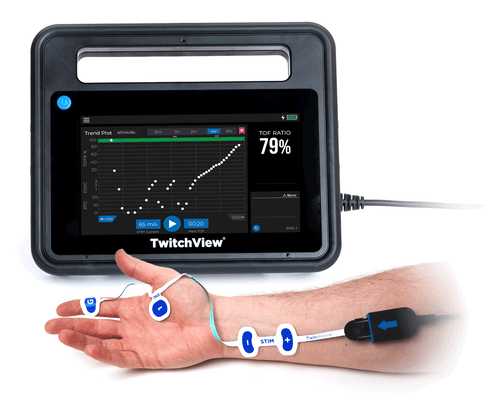Built in the OR, Not in a Boardroom: The Blink Origin Story

When Precision Became the Priority
In every operating room, there’s one question that defines the end of the case: Is the patient ready?
For years, anesthesiologists relied on twitch monitors that offered little more than guesswork. Unreliable signals. Inconsistent readings. A signal one minute, noise the next.
That’s not a tool you trust for patient safety. That’s a compromise.
Blink began when a team of engineers sat across from a group of anesthesiologists and asked a simple question:
What do you need this monitor to do—every single time?
Why It Matters
Residual paralysis remains a persistent risk during anesthesia recovery.
A study in Anesthesiology found that nearly 40% of patients experienced residual neuromuscular blockade when subjective or outdated monitoring tools were used. This leads to complications like hypoxia, airway obstruction, delayed emergence, or unplanned reintubation.
Technology that can’t provide a reliable signal isn't just a limitation—it’s a liability. The critical minutes before extubation require clarity, not uncertainty.
When data is delayed or unclear, anesthesiologists lose confidence in their decisions. This affects workflow, delays turnover, and most importantly, puts patients at risk.
Blink set out to solve that.
The Origin Story
The idea for Blink didn’t start in a lab or a boardroom.
It started with a challenge.
Dr. Andrew Bowdle, a leading anesthesiologist and researcher, approached a group of engineers with a challenge: Twitch monitors don’t work like they should. Can you fix that?
The team began where most do—with acceleromyography (AMG).
But after months of testing and clinical input, they realized the solution wasn’t fixing AMG. It was moving on from it entirely.
They pivoted to electromyography (EMG), the method that directly measures muscle response to nerve stimulation. And they didn’t make that decision alone. They consulted with anesthesiologists at top institutions like the University of Washington and the University of Iowa.
Design choices weren’t guided by R&D timelines.
They were guided by OR reality.
- Could it be set up by any member of the care team?
- Would it deliver reliable signals in every room, for every case?
- Could it remove the doubt at extubation?
The result was TwitchView—a purpose-built, EMG-based TOF monitor designed for clarity.
It was validated through peer-reviewed studies, including independent evaluations comparing it against the gold standard of mechanomyography (MMG).
Perhaps most importantly, it was field-tested in real ORs by clinicians who asked for one thing:
Trust the data. Every time.
A Mission Rooted in Recovery
Blink’s mission and ethos is straightforward:
Eliminate residual paralysis and give anesthesiologists clear, confident recovery data.
Their goal is to make EMG monitoring as routine and indispensable as pulse oximetry.
They’re not here to complicate workflows.
They’re here to make anesthesia recovery safer, more predictable, and more aligned with modern standards of care.
Every feature of TwitchView supports that mission:
- Electrode placement that aligns with ASA guidelines
- Signal quality validated against MMG
- An intuitive interface built for fast setup and fast decisions
More Than a Device
Blink is more than a monitoring platform.
It’s a reflection of how great technology gets built—with clinicians, not just for them.
They didn’t set out to disrupt a market.
They set out to fix a real problem.
Anesthesiologists deserve tools they can trust.
Not just once. Every time.
We are Blink
In a field where time is short and decisions are critical, trust matters.
Blink’s story proves that when engineers and clinicians work side by side, patient outcomes get better.
That’s not marketing. That’s medicine.



